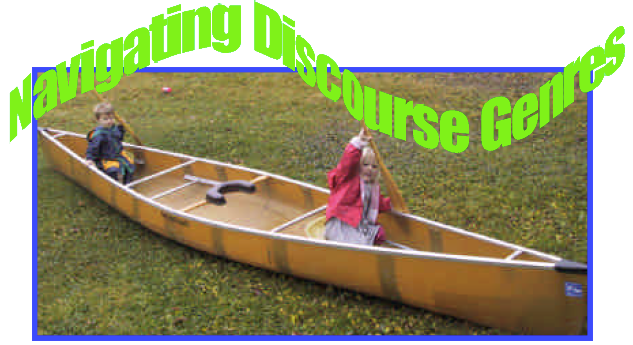
Parallel Texts in American Sign Language and English
on Canoeing in the Boundary Waters
with Eric Larson and Jenny Stenner
Interpretations by Anthony Verdeja
The Whats and Whys of Discourse Genres
What They Are
The genesis of this project came from Robert Ingram’s foreword to Innovative Practices for Teaching Sign Language Interpreters.(Edited by Cynthia Roy and published by Gallaudet University Press in 2000.) In this article, Ingram talks about about teaching interpreting students about discourse genres using Kathleen Callow’s book, Discourse Considerations in Translating the Word of God. He lists out the 6 rhetorical genres that she elaborates in her book.
- Narrative: Recounts a series of events ordered more or less chronologically
- Procedural: Gives instructions as to the accomplishing of a task or achieving of an object or
- Hortatory or Persuasive: Attempts to influence conduct of listener
- Explanatory: Seeks to provide information required in particular circumstances
- Argumentative: Attempts to prove something to the hearer
- Conversational: Conversation between two or more people
(Note: The Conversational genre is not in this project. The focus here is on monologues.)
After explaining these different genres, Ingram then wrote on the board the title of a speech, “Backpacking in Yosemite,” and took his students through an exercise of predicting what the speech would be about if it were given in the different genres listed in Callow’s books. Students quickly gained insight into the importance of recognizing genre and how it might impact the language used in any given text.
From the example of backpacking in Yosemite, my mind quickly drifted to “Canoeing in the Boundary Waters.” The texts contained on this project represent an opportunity to do a similar exercise that Ingram did with his stu- dents and then go beyond to actually look at how texts might differ across genre and across languages.
Why We Should Care
Given that this project was originally created as part of a series of workshops targeted at K-12 interpreters, I think it’s worth making a larger case for why understanding genres is important. Given that the nature of the texts are more recreational in nature, one might ask: How does this relate to the academic experience of Deaf students and the interpreters who work with them?
In a word, everything. For those of us who grew up immersed in our native language, we are easily able to recognize different genres–even if we can’t consciously name them. We know, by the nature of how someone is talking, whether they are trying to persuade us, entertain us with a story, or explain something to us. Part of our language development involved exposure to all the different forms of language that allow us to intuit what perspective a certain person is coming from.
For Deaf students who receive language through an interpreter, this experience of different types of language depending on the text’s goal and context is not necessarily a given. Too often, students who are mainstreamed have a much more limited exposure to language models, and so an interpreters ability to model a variety of types of signing is critical if Deaf students will gain the intuitive sense of reading the intent of speak- ers, and not just the overt meaning of their words or signs. The hope is that this project might make that challenge more attainable for interpreters.
